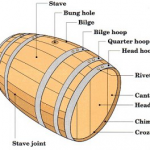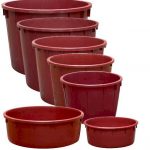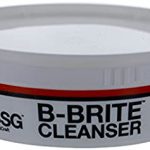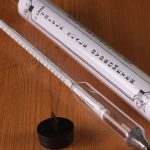Fermenting Tubs: Product Spotlight
Fermenting Tubs: Product Spotlight
Fermenting tubs: we sell a variety of winemaking products, including tubs specifically made for fermenting. Why is a fermenting tub one of the best investments you can make? Choosing the proper vessel to ferment your wine in is extremely important as it effects the quality of fermentation.
What’s so special about our fermenting tubs?
Our fermenting tubs are made of food grade plastic. Did you know if you used a non-food grade plastic pail or tub to ferment your wine in, you can actually poison yourself? This is due to the plastic actually seeping into your wine while it heats up during fermentation! Wild, right?
What are the benefits of using a fermenting tub aside from not being poisoned?
Aside from not being poisoned by your fermenting tub, the way our fermenting tubs are engineered makes a big difference than per say a normal drum or bucket. Our pails gradually get wider going from the base up, giving the must more surface area to breathe. This also helps with any cold spots you may have. More surface area equals better fermentation, better fermentation equals better wine, and we all know what better wine equals!
Do your fermenting tubs come with lids?
Our fermenting tubs do come with lids (sold separately) however; we actually recommend simply using a bed sheet draped over the tub. Why? Let’s revisit the need to let your wine breathe: not providing enough oxygen to your wine can actually give it a rotten egg smell, this is due to volatile sulfur compounds developing in the enclosed space between the wine and the lid. Not only do you want to avoid rotten egg smelling wine, you also don’t want your tub to explode. A closed fermentation tub becomes an incubator, trapping heat with the gasses and BOOM! Now you have must everywhere AND your winemaking room smells like rotten eggs. Yuck. Using the bed sheet instead of the lid will prevent this too.
If you’ve decided to invest in a fermenting tub, visit our store to pick yours up or give us a call at (877) 812 – 1137 to place your order over the phone with one of our sales associates. You can view the sizes and specs of our tubs here.
B-Brite: Product Spotlight
What is B-Brite?
B-Brite is an eco-friendly cleaner that uses sodium percarbonate and sodium carbonate to remove stains and fermentation residues. It contains no chlorine, which can be dangerous around wine. If chlorine comes in contact with your wine or winemaking equipment, it can result in “cork taint.”
It is not a sanitizer or disinfectant, so you’ll still need some SO2 handy to sanitize your equipment afterwards. B-Brite does have moderate anti-microbial properties, however, that can be beneficial in fermentation settings. It is safe to use on all materials and equipment.
How do I use it?
First, dissolve one Tablespoon per 1 gallon of warm water. Second, wash your equipment with the solution. Lastly, rinse with clear, cold water. For descaling of significant mineral buildup, a 20-30 minute soak in B-Brite solution might be required.
Where can I get it?
You can find and purchase it here. We carry it in multiple sizes ranging from 8oz to 5lbs. If you need assistance in cleaning your winemaking equipment, check out our Free Cleaning and Sanitizing video (here), or give us a call at (877) 812 – 1137 and a sales associate will be here to help you find what you need.
Product Spotlight: Triple Scale Hydrometer
A Triple Scale Hydrometer is a winemaking instrument used to measure the progress of fermentation and determine the alcohol percentage it will yield.
How does it work?
The Triple Scale Hydrometer measures the density of a liquid in relation to water. In winemaking, you are measuring how much sugar is in the wine. The more sugar that is in the wine, the high the hydrometer will float. As fermentation proceeds and sugar turns in to alcohol, the hydrometer will slowly sink. When fermentation is complete the hydrometer will stop sinking.
How do I read it?
Triple Scale Hydrometers have their name because they indeed have 3 scales. The 3 scales are Specific Gravity, Brix, and Potential Alcohol.
Specific Gravity – is the ratio of the density of a liquid to the density of water. In winemaking, as you add sugar, the specific gravity increases. It indicates the amount of fermentable sugar or potential alcohol in the wine.
Brix – the measurement of the sugar content in grapes, must, and wine. This indicates the ripeness of the grapes at harvest. To get an alcohol conversion, multiple your Brix by .55.
Potential Alcohol – the total measurement of the alcohol that wine may contain, once fermentation is complete. This includes the levels of glucose and fructose. The levels of each will enable the winemaker to determine the conversion rate of sugar into alcohol.
How do I use it?
Place a sample of your wine into a test tube. You can use a wine thief to retrieve the wine from your vessel easily. Place the hydrometer into the test tube filled with wine. It will take a moment for it to stop spinning and moving around. Once it becomes still, record the data from each scale. It is a good idea to do this when you receive your must or juice so that you have your starting numbers. It is always a great idea to track your process for any future possible issues, or if your wine comes out amazing and you’d like to repeat the steps again for your next batch of wine.
Where can I buy one?
You can buy your Triple Scale Hydrometer here. Musto Wine Grape is here for you and all of your winemaking needs. From equipment to customer support, we’re here to help you make the wine of your dreams. For any questions email sales@juicegrape.com or call (877) 812 – 1137 to speak with someone to get you started!










Recent Comments